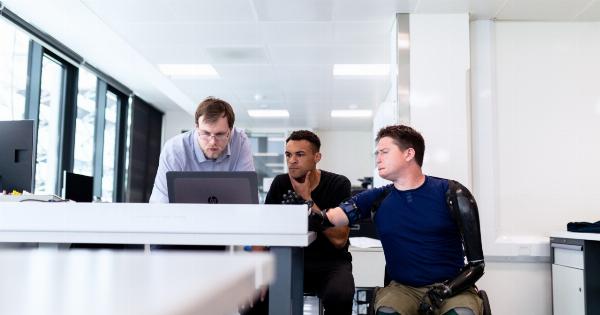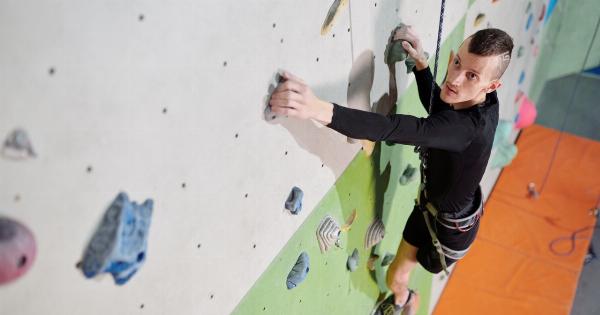Walking has always been a vital part of human life, and with the advancement of technology over time, the way we walk has also been revolutionized. From shoes to prosthetics, technology has significantly transformed the way we move around.
In this article, we discuss some of the revolutionary technologies that have transformed walking.
GPS Shoes
GPS shoes are a revolutionary piece of technology that can help prevent wandering, a common issue in people with dementia.
Designed with a tracking device embedded inside the sole, the GPS shoes can track and send an alert when the wearer moves outside a predefined area, ensuring that people with dementia do not wander off or get lost. This technology can offer significant benefits for caregivers who can have added peace of mind when looking after their loved ones.
Prosthetic Limbs
Prosthetic limbs are another groundbreaking technology that has transformed walking. They offer a new dimension of mobility and freedom of movement for people with limb loss.
With the use of prosthetic limbs, people can walk, run, climb stairs, and do many more activities that were once thought impossible for them to do. With technological advancements, prosthetic limbs have become more precise and sophisticated, giving users greater control and comfort.
Exoskeletons
Exoskeletons are wearable robotic devices that can provide reinforcement to the limbs, enabling the user to do things they were previously unable to do. Exoskeletons have been adapted for different purposes, including military and medical use.
They offer a range of benefits, including improved strength, balance, and endurance, making it easier for people with limited mobility to walk. These devices are also used for physical therapy, allowing patients to walk or stand before they are physically ready to do so.
Smart Insoles
Smart insoles are a new wearable technology designed to improve walking performance. These insoles can measure the pressure and motion of the foot while walking, providing feedback on the user’s walking pattern.
Smart insoles offer valuable insights for people with walking difficulties, such as stroke survivors, as they can help to improve their balance and gait. They can also help reduce the risk of falls and injuries, making walking safer and more comfortable.
Proximity Sensors
Proximity sensors are another technological innovation that has transformed walking. These sensors can detect obstacles through ultrasonic waves or infrared signals and communicate this to the user either through audio or vibration.
Proximity sensors are a game-changer for visually impaired walkers, allowing them to navigate safer and more comfortably. When incorporated into walking aids, proximity sensors make it easier for individuals to avoid collisions with obstacles, making their daily walks less risky.
Intelligent Crutches
Intelligent crutches are another exciting development in walking technology.
These crutches can detect how much weight is being applied and adjust the pressure being exerted accordingly, reducing the strain that users feel on their wrists, elbows, and shoulders. The crutches can also inform users on their walking speed, and provide data on how much pressure is being applied on each crutch. These advances in technology are beneficial to those with long-term conditions or injuries requiring the use of crutches.
Robotic Assistants
Robotic assistants are another example of technology that has transformed walking. These robots can be used to assist in walking and balance, helping people with disabilities to walk more comfortably.
Robotic assistants can be used in clinics or therapy centers, where they can help patients practice walking, developing their muscles, and improving their balance. These increasingly sophisticated robots can provide modern techniques for advanced mobility aids and can be programmed to assist in rehabilitation exercises.
Walking Apps
Walking apps are an innovative technology that is gaining popularity. These apps track the distance, speed, and route of your walking exercise. They can also provide a map and suggest walking routes based on user preference.
Many of these apps also come with various challenges to make your walks more exciting. They can help users stay motivated to keep walking and exercising.
Smart Textiles
Smart textiles are a relatively new field in the development of walking technology. These textiles are integrated with sensors that can detect body temperature and movement.
They are also adaptive to the environment and can optimize thermal insulation and moisture-wicking. These textiles can enhance the comfort and safety of walking, making it easier for individuals to maintain an active lifestyle with added support throughout the day.
The Bottom Line
The latest technological advancements in walking are improving the lives of many individuals with different abilities. From GPS shoes to smart textiles, these tools help people move around safer and in greater comfort.
The future looks bright for walking technology and the development of more practical and innovative applications for walking aids will continue to transform walking.































